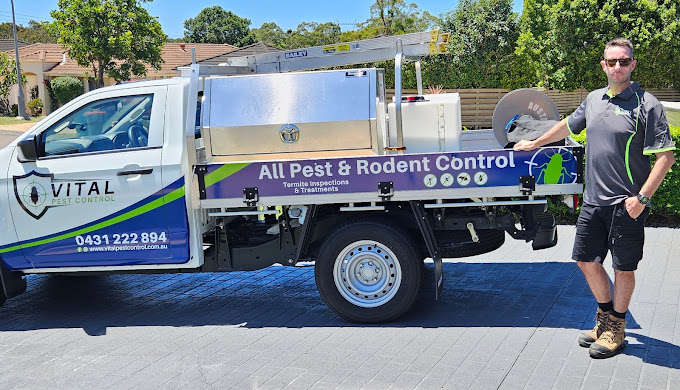
• Reliable And Trustworthy
• Responsive Proactive Solutions
• Detail-focused for lasting results
EXCELLENTTrustindex verifies that the original source of the review is Google. Great communication, on time, pleasant and thorough. Highly recommend.Posted onTrustindex verifies that the original source of the review is Google. Adam was extremely efficient in his work at our home. He provided follow up messages to confirm the inspection date & arrived on time. Adam explained all the details involved with the pest inspection & the expected timeframe. Once the work was completed, Adam called & discussed his report & outcomes. I felt completely comfortable with Adam being in our home & he has a quiet yet confident manner. I can highly recommend Adam for any pest inspection required.Posted onTrustindex verifies that the original source of the review is Google. Can't recommend Adam and his team enough, they were super reliable and carried out their work with utmost professionalism. Thank you again for taking car of my mother in laws place, we will definitely be using you again! 🙂Posted onTrustindex verifies that the original source of the review is Google. I would highly recommend Adam at Vital Pest Control for his friendly customer service, extensive knowledge and fantastic and thorough work. We have used Vital Pest Control for a few years and are always very happy with the quality and longevity of the spray. Adam is always happy to provide information about service and products and is on time and efficient.Posted onTrustindex verifies that the original source of the review is Google. As a first time home buyer we used Adam prior to us moving in He was prompt, thorough, professional and easy to work with Can 100% guarantee I will be using him againPosted onTrustindex verifies that the original source of the review is Google. Adam was amazing very professional he explained everything and was very thorough taking great care in providing a professional service. I would highly recommend.Posted onTrustindex verifies that the original source of the review is Google. Have used well known pest contoll for over ten years. Recently standard of their work had fallen. Rang adam at vital pest control. Could not reccomend him highly enough. Thankyou adam and we will see you in twelve months. Mark and julie hillPosted onTrustindex verifies that the original source of the review is Google. Quick reliable service, highly recommend looking fwd to our next annual servicePosted onTrustindex verifies that the original source of the review is Google. Punctual, good job done & very friendly service.Posted onTrustindex verifies that the original source of the review is Google. Highly recommend. Turned up on time and provided a great and efficient service. We are due for another spray soon and will definitely get them back as we haven’t had a pest issue since the last visit.
Welcome to Pest Control On The Central Coast NSW, where we provide reliable and trustworthy pest management. At Vital Pest Control, we offer responsive, proactive solutions tailored to your needs.
Residential Pest Services
Our residential services focus on eliminating pests like cockroaches, spiders, and ants. We ensure your home stays safe and pest-free. Our detail-focused approach delivers lasting results. Trust us for effective residential pest control on the Central Coast NSW.
Eco-Friendly Pest Control
We prioritise eco-friendly methods, using sustainable solutions without harsh chemicals. Our eco-friendly pest control protects your family and the environment. Choose our green solutions for peace of mind.
Pest and Insect Identification
Accurate identification is key in our process. We identify pests like wasps and fleas quickly and efficiently. This ensures targeted, effective pest control solutions.
Termite Management Systems
Our termite systems prevent costly damage. We implement strategies tailored to your property. Protect your investment with our termite management expertise.
Rodent Mitigation
We tackle rodent issues, focusing on rats and mice. Our solutions prevent infestations and safeguard your home. Trust us for comprehensive rodent mitigation on the Central Coast NSW.
Pest Prevention And Maintenance
Prevention is better than cure. Our maintenance plans keep pests at bay. Regular checks and treatments offer long-term protection against pest problems.
Commercial Pest Solutions
We understand businesses need swift, effective pest control. Our commercial solutions ensure minimal disruption. Protect your business with our expert pest control on the Central Coast NSW.
Discover how we can help you today! Visit our Contact page to learn more.
• Reliable And Trustworthy
• Responsive Proactive Solutions
• Detail-focused for lasting results
We pride ourselves on our commitment to providing exceptional customer service and expert Pest Control Solutions.
We are fully trained, licensed, and insured, ensuring you receive the highest level of professionalism and quality workmanship.
With over 10 years of experience in the Pest Control industry, you can trust us to handle all your Pest Control needs on The Central Coast, Newcastle and Hunter Valley Regions.
We give the best service at an affordable price
You can rely on us to get the best possible result
We have a 4-Hour Response Time (7 Days)
Over 10 years of Pest Control experience
We are locally owned and operated on The Central Coast NSW
Latest technology for protection from pests
All our Pest Technicians are experienced, qualified and insured
Read our Google Reviews for our Pest Control services
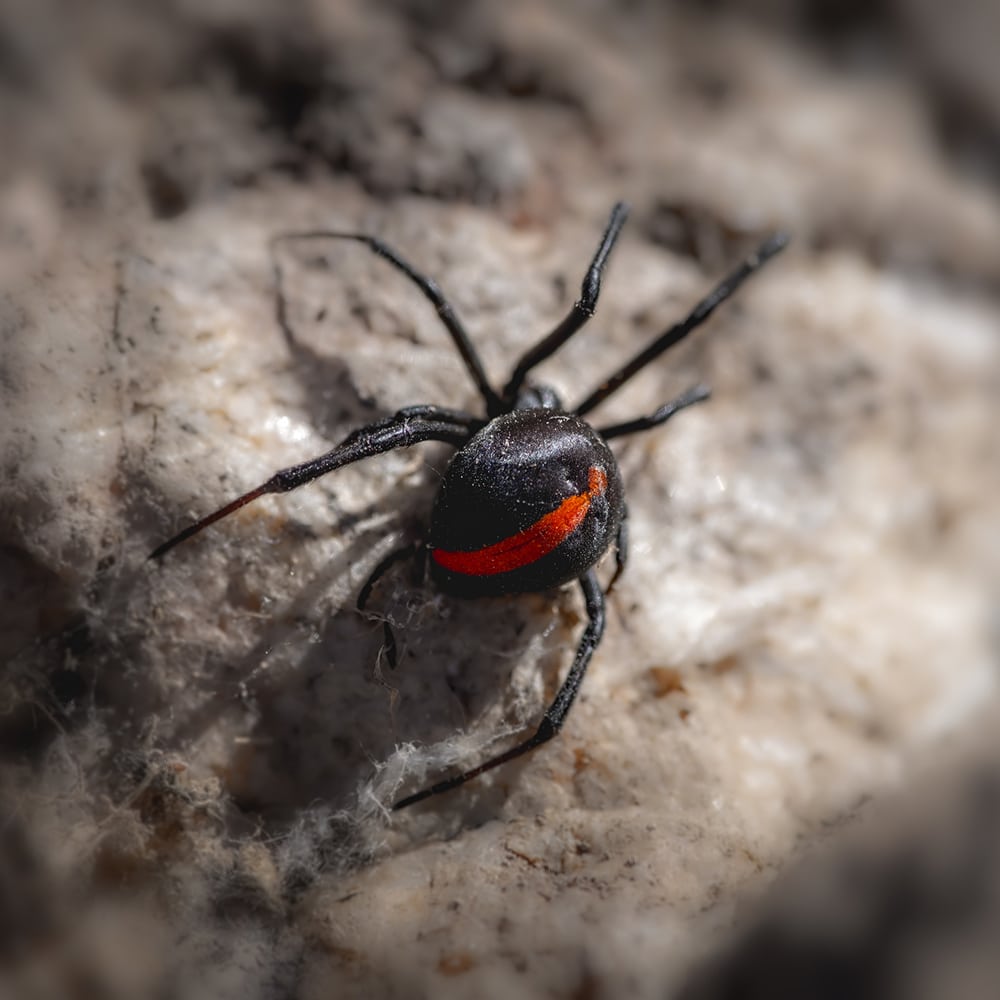
Struggling with pest invasions? Discover effective Pest Control On The Central Coast NSW with Vital Pest Management Systems.
The Central Coast of NSW offers a unique blend of natural beauty and bustling residential areas. However, with this charm comes the challenge of managing unwanted pests. Residential pest services play a crucial role in maintaining a healthy living environment. By understanding the specific pests that affect homes in this region, residents can take proactive steps to protect their properties.
Understanding Common Pests
Homes on the Central Coast frequently face invasions from pests like cockroaches, spiders, ants, wasps, fleas, termites, rodents, and possums. Each of these pests presents distinct issues and requires targeted strategies. Cockroaches, for instance, thrive in warm, damp environments, while spiders may be drawn to cluttered spaces. Ants often infiltrate kitchens in search of food, and termites can cause significant structural damage if left unchecked. Awareness of these common pests is the first step in effective pest management.
Pest Management Systems
Implementing comprehensive pest management systems is vital for long-term pest control. These systems involve regular inspections, preventative measures, and treatments tailored to specific pest behaviours. Professional pest services on the Central Coast utilise these systems to not only address current infestations but also prevent future occurrences. By focusing on integrated strategies, homeowners can enjoy peace of mind knowing their homes are protected.
Environmental Considerations
Given the Central Coast’s lush environment, it is important to consider the ecological impact of pest control. Many residential pest services now offer environmentally friendly solutions that minimise harm to the surrounding landscape. These methods often involve using natural deterrents and less toxic treatments. Such practices ensure that while pests are controlled, the local ecosystem remains unharmed, preserving the region’s natural beauty.
Seasonal Pest Challenges
The Central Coast’s climate brings specific seasonal challenges for pest control. Warmer months can see an increase in wasps and fleas, while cooler weather might drive rodents indoors seeking warmth. Understanding these seasonal patterns enables residents to anticipate and prepare for potential pest issues. Engaging with local pest services ensures that strategies are adapted to these seasonal fluctuations, providing effective protection year-round.
The Importance of Regular Inspections
Regular inspections by professional pest services are crucial in identifying and addressing potential pest problems before they escalate. These inspections can uncover signs of termite activity, nests of rodents, or early infestations of possums. By catching these issues early, homeowners can avoid costly damage and extensive treatments. Regular check-ups are a key component of any effective pest management plan.
Residential pest services on the Central Coast NSW offer essential support for homeowners facing the challenges of pest control. By understanding local pest behaviours, employing comprehensive management systems, and considering environmental impacts, residents can maintain a safe and comfortable home. Engaging with professional pest services ensures that homes are safeguarded against unwelcome invaders, preserving the quality of life on the Central Coast.

Facing persistent cockroaches or spiders? Discover eco-friendly Pest Control On The Central Coast NSW with advanced Pest Management Systems.
Eco-friendly pest control is gaining traction on the Central Coast, NSW, as people become more conscious of environmental impacts. Traditional methods often involve harsh chemicals, but sustainable alternatives focus on protecting both nature and our homes. This shift benefits not only the environment but also the health and safety of families and pets.
Understanding Eco-Friendly Pest Control
Eco-friendly pest control prioritises natural solutions over chemical treatments. It involves using organic products and techniques that target pests like cockroaches, spiders, ants, and wasps while minimising harm to the surrounding ecosystem. This approach helps preserve beneficial insects and prevents soil and water contamination.
Pest Management Systems for the Central Coast
Effective pest management systems on the Central Coast consider the unique climate and local wildlife. These systems employ strategies like habitat modification and biological controls to deter pests such as termites, rodents, and fleas. By focusing on prevention and control, residents can maintain a pest-free environment without resorting to harmful chemicals.
Natural Solutions for Common Pests
For cockroaches and ants, natural deterrents like diatomaceous earth and peppermint oil work wonders. Spiders can be managed using vinegar sprays and essential oils, while wasp traps can be crafted from household items. Fleas are often controlled with nematodes, which are tiny beneficial worms that target flea larvae in the soil.
Managing Rodents and Possums Sustainably
Rodents and possums pose significant challenges, but eco-friendly methods like ultrasonic devices and exclusion techniques can effectively manage these pests. Sealing entry points and using humane traps ensures that these creatures are managed without inflicting harm, aligning with sustainable practices.
Benefits of Eco-Friendly Pest Control
Choosing eco-friendly pest control offers significant advantages, including improved air quality and reduced exposure to toxic chemicals. It promotes a safer environment for children and pets, while also supporting biodiversity. Additionally, this approach aligns with growing consumer demand for sustainable living solutions.
Incorporating eco-friendly pest control on the Central Coast not only protects homes but also contributes to a healthier planet. By embracing sustainable practices, residents can effectively manage pests while supporting the local ecosystem.
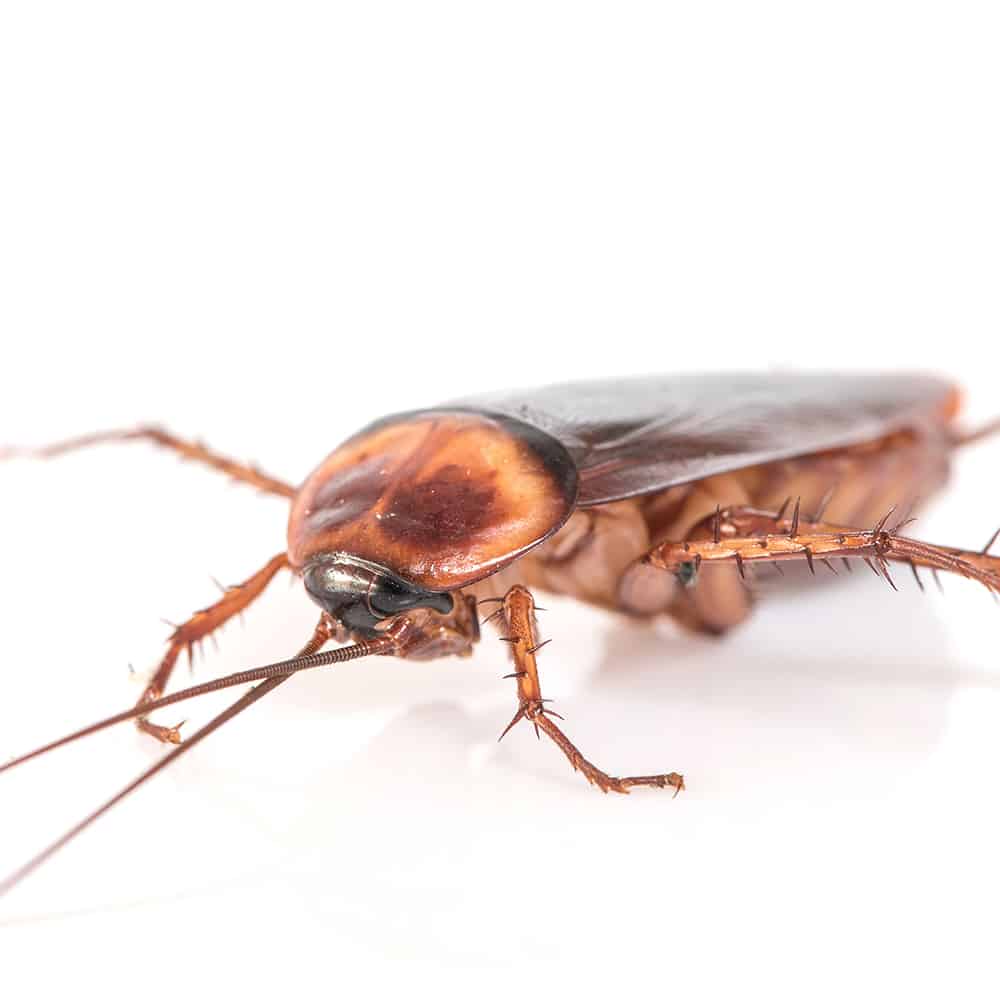
Dealing with cockroaches or spiders? Discover effective pest control on the Central Coast NSW with Vital’s pest management systems.
Living on the Central Coast of NSW offers a beautiful lifestyle close to nature. However, it also means dealing with various pests and insects. Identifying these pests is crucial for effective pest management systems. Understanding the common pests in this region can help you take proactive steps to protect your home or business.
Cockroach Identification
Cockroaches thrive in warm, humid environments, making the Central Coast ideal for them. These pests are often found in kitchens and bathrooms, where food and moisture are abundant. Identifying a cockroach infestation involves spotting droppings, egg cases, and a distinctive musty odour. Cockroaches are nocturnal, so seeing one during the day often indicates a larger problem.
Spiders on the Central Coast
Spiders are common in homes, gardens, and bushland areas. While most spiders are harmless, some, like the funnel-web and redback, can pose health risks. Identifying spiders involves looking at their web type and body shape. Regular cleaning and removing clutter can help reduce spider habitats around your property.
Ant Infestations
Ants are persistent pests that often invade homes searching for food. They travel in trails and can be found in kitchens or near food sources. Different species may require different pest management systems. Identifying ants involves observing their size, colour, and behaviour. Sealing food and cleaning spills promptly can help deter these unwelcome visitors.
Wasps Around Your Home
Wasps can be aggressive, especially when disturbed. They build nests in sheltered areas like roof eaves or tree branches. Identifying wasps involves recognising their paper-like nests and distinct buzzing. If you notice an increase in wasp activity, it’s essential to address the issue promptly, as they can sting multiple times when threatened.
Fleas and Their Impact
Fleas are tiny, jumping insects often brought into homes by pets. They thrive in warm, humid conditions. Identifying a flea infestation involves noticing excessive scratching in pets and spotting fleas or their droppings in pet bedding. Regular pet grooming and vacuuming can help manage flea populations effectively.
Termite Threats
Termites are highly destructive, capable of causing significant damage to wooden structures. Identifying termites involves looking for mud tubes, hollow-sounding wood, and discarded wings. Regular inspections and maintenance are crucial in preventing termite infestations, protecting your property from costly damage.
Rodent Identification
Rodents, including rats and mice, are common pests that can carry diseases. They are often found in attics, basements, and kitchens. Identifying rodents involves spotting droppings, gnaw marks, and hearing scratching noises at night. Effective rodent control includes sealing entry points and maintaining cleanliness to reduce their attraction to your property.
Possums in Urban Areas
Possums are protected native animals that occasionally become pests by entering roofs or gardens. Identifying possums involves listening for noises at night and finding droppings. While they are generally harmless, their presence can cause noise and mess. It’s important to use humane methods to manage possum presence, ensuring compliance with local wildlife protection laws.
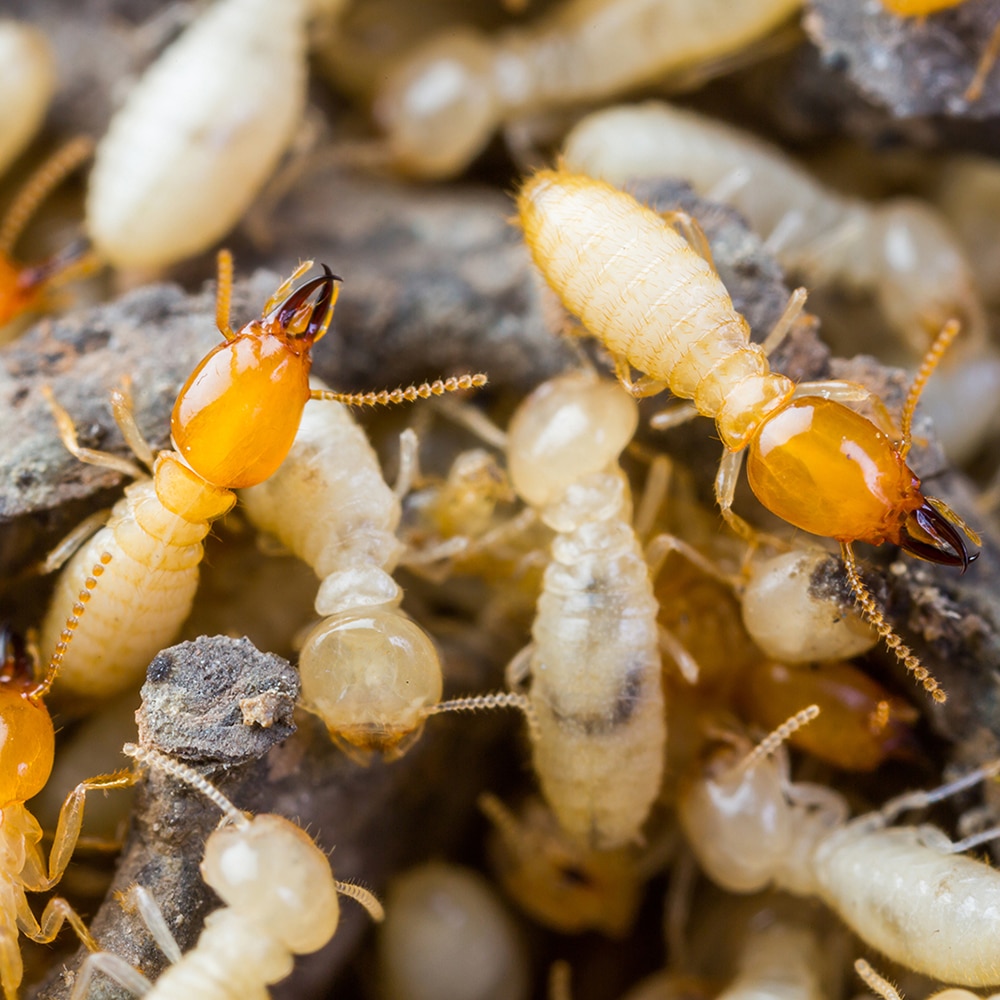
Are termites threatening your home? Discover expert pest control on the Central Coast NSW today with Vital Pest Control’s innovative pest management systems.
The Central Coast of NSW, with its lush landscapes and humid climate, is a perfect habitat for termites. These pests can cause significant damage to properties if not managed properly. Understanding termite management systems is crucial for homeowners and businesses alike.
Understanding Termite Behaviour
Termites are social insects that live in colonies, usually underground or within wooden structures. They are drawn to moisture and can be found in damp areas of a property. Knowing their habits aids in effective pest management systems. By recognising signs like mud tubes or hollow-sounding wood, property owners can act promptly.
Types of Pest Management Systems
On the Central Coast, pest management systems vary to suit different needs. Physical pest management systems involve installing materials that termites cannot penetrate. Meanwhile, chemical systems use treatments that deter or eliminate termites. Each system has its strengths, and choosing the right one depends on the property’s specific conditions and the level of termite activity.
Regular Inspections and Monitoring
Regular termite inspections are essential in maintaining effective pest management. Professionals can identify early signs of infestation and assess the effectiveness of existing systems. Implementing monitoring systems can detect termite activity early, preventing costly damages. Regular check-ups ensure that pest management systems remain effective over time.
Environmentally Friendly Solutions
With growing environmental awareness, many homeowners prefer eco-friendly pest management options. These systems minimise chemical use, reducing impact on the environment while effectively managing termite threats. Options include using natural repellents or physical pest management systems, which offer a sustainable approach to termite control.
Choosing the Right Professional
Engaging a skilled professional is crucial for effective termite management. On the Central Coast, many companies offer specialised services tailored to local conditions. Selecting a reputable provider ensures that pest management systems are installed correctly and maintained efficiently. This choice is vital for safeguarding property against termite damage.
Effective termite management is a continuous process involving understanding, prevention, and professional intervention. By adopting suitable systems and seeking expert advice, property owners on the Central Coast can protect their investments from these destructive pests.
Adam Sands - Licenced Pest Technician
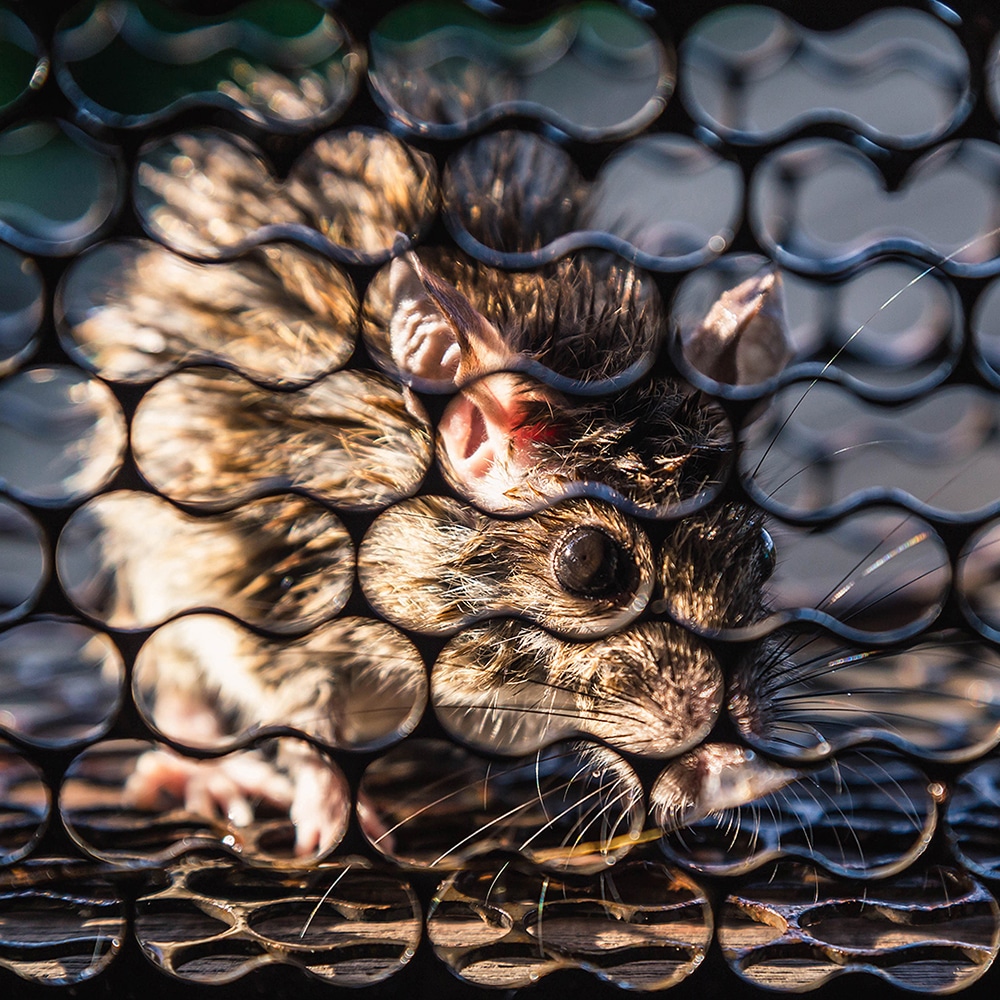
Struggling with rodents invading your home? Discover effective pest control on the Central Coast NSW with our expert pest management systems.
Rodent mitigation is crucial for maintaining a healthy environment on the Central Coast of NSW. With its mix of urban areas and natural landscapes, this region provides both challenges and opportunities for effective pest management systems. Understanding the local rodent species, their behaviours, and how to manage them is key to reducing infestations.
Understanding Local Rodent Species
The Central Coast is home to several rodent species, including the common house mouse and the bush rat. Knowing the specific habits and habitats of these rodents helps in crafting tailored pest management systems. House mice tend to thrive in urban areas, while bush rats prefer bushland and rural settings. Each species requires a different mitigation strategy.
Identifying Infestation Signs
Early detection of a rodent problem is essential. Signs of infestation include droppings, gnaw marks, and nests. On the Central Coast, these signs might be found in attics, basements, or garden sheds. Regular inspections can help spot these indicators before the problem escalates.
Implementing Effective Rodent Control Methods
Effective control methods for rodents involve a combination of sanitation, exclusion, and population control. Keeping areas clean and free of food scraps limits attraction. Sealing entry points prevents access. For population control, traps and bait stations can be strategically placed. Pest management systems should consider the unique environment of the Central Coast.
Utilising Professional Pest Management Services
Engaging professional pest management services ensures comprehensive rodent control. Professionals use advanced techniques and products that are safe for both people and pets. They can assess the situation accurately and implement solutions tailored to the Central Coast’s specific conditions.
Preventative Measures and Maintenance
Ongoing maintenance is vital to keep rodents at bay. Regularly inspecting and maintaining properties reduces the likelihood of infestations. On the Central Coast, this includes clearing debris and ensuring that gardens are well kept. Pest management systems should include continuous monitoring to ensure long-term effectiveness.

Are you struggling with cockroaches, spiders, or termites? Discover how Pest Control On The Central Coast NSW provides effective pest management systems for a pest-free home.
The Central Coast of NSW offers a vibrant lifestyle, but it also presents unique pest challenges. From cockroaches to rodents, these unwelcome guests can disrupt homes and businesses. Effective pest prevention and maintenance are essential for maintaining a healthy and peaceful environment.
The Importance of Regular Inspections
Regular inspections are a cornerstone of effective pest management. Identifying potential infestations early can save time and money. For residents on the Central Coast, enlisting a professional for periodic assessments can help in spotting signs of cockroaches, spiders, or even possums before they become significant issues. Regular checks can also ensure that pest management systems are functioning correctly.
Implementing Pest Management Systems
Proactive pest management systems are essential in preventing infestations. These systems include strategies like sealing entry points, maintaining cleanliness, and using safe pest control products. For example, to combat ants, ensure all food is stored properly, and for termites, keep wooden structures dry and free from contact with soil. Regular maintenance of these systems is crucial to ensure long-term effectiveness.
Natural and Chemical Solutions
Balancing natural and chemical pest control solutions can provide effective results. On the Central Coast, using natural repellents like citrus oils can deter spiders, while chemical treatments might be necessary for severe rodent infestations. It’s vital to choose environmentally friendly products that are safe for families and pets. Consulting with local pest control experts can help in selecting the right solutions for specific pests like fleas or wasps.
Seasonal Pest Challenges
Pest activity on the Central Coast varies with the seasons. During warmer months, residents may notice an increase in ants and wasps, while cooler periods might bring rodents seeking shelter. Being aware of these patterns allows for timely preventive measures. For instance, securing garbage bins can prevent rodents, and ensuring screens are intact can keep out unwanted spiders and cockroaches.
Working with Local Experts
Partnering with local pest control professionals can provide tailored solutions for the Central Coast’s unique pest challenges. These experts understand the local environment and can offer recommendations specific to regional pests like termites and possums. Regular consultations ensure that pest management systems remain effective and up-to-date, providing peace of mind for homeowners and business owners alike.
Maintaining a pest-free environment on the Central Coast involves vigilance and the right strategies. By integrating regular inspections, effective pest management systems, and expert advice, residents can protect their properties from common pests like cockroaches, ants, and rodents.

Are cockroaches, ants, or termites invading your space? Discover effective pest control on the Central Coast NSW with our expert pest management systems.
Commercial establishments on the Central Coast, NSW, face unique challenges when it comes to pest control. The area’s climate can be inviting for a variety of pests, which can disrupt businesses. Effective pest management systems are crucial for maintaining a clean and safe environment. Businesses need to ensure that pests like cockroaches, spiders, ants, wasps, fleas, termites, rodents, and possums are kept at bay. Implementing professional solutions not only protects property but also secures the health of employees and customers.
Understanding Common Pests on the Central Coast
The Central Coast is home to several common pests that can affect commercial properties. Cockroaches thrive in warm environments and can quickly infest kitchens or storage areas. Spiders, although often harmless, can deter customers if webs become visible. Ants are another nuisance, especially in food service areas where they search for sustenance. Wasps pose a threat with their aggressive nature, particularly around outdoor dining spaces. Businesses must also be mindful of fleas, which can be brought in by pets and spread rapidly. Termites silently damage wooden structures, while rodents and possums can cause havoc by gnawing on wires and contaminating areas. Understanding these pests helps in creating targeted strategies for each pest type.
Implementing Effective Pest Management Systems
To tackle these challenges, businesses need comprehensive pest management systems. Preventative measures are the first line of defence, focusing on sealing entry points and maintaining cleanliness. Regular inspections by professionals can identify early signs of infestation, allowing for prompt action. Integrated pest management combines various techniques such as biological control, physical barriers, and chemical treatments to manage pest populations effectively. Tailoring these solutions to specific business needs ensures minimal disruption while achieving long-term pest control.
Choosing the Right Pest Control Partner
Selecting a reliable pest control partner is vital for commercial success. Look for providers with experience in handling various pests common to the Central Coast. They should offer customised plans that suit the specific requirements of your establishment, whether it’s a restaurant, office, or retail space. The right partner will use environmentally friendly products and methods to ensure safety for all occupants. Regular communication and reporting from your pest control provider can keep you informed and prepared for any pest-related issues.
Ensuring Safety and Compliance
Compliance with health and safety regulations is another critical aspect of commercial pest solutions. Businesses must adhere to local guidelines to avoid penalties and ensure the wellbeing of everyone on the premises. Pest management systems should align with these standards, using approved products and methods. Regular training for staff on recognising pest signs and maintaining hygiene can bolster your pest control efforts. Ensuring compliance not only protects your business legally but also enhances your reputation among clients and visitors.
The Economic Impact of Pest Control
Investing in pest control can have significant economic benefits for businesses on the Central Coast. Effective management reduces the risk of costly damages caused by pests like termites or rodents. It also prevents potential revenue losses that could result from a damaged reputation or customer complaints. Regular pest control enhances the overall customer experience, encouraging repeat business and positive reviews. By safeguarding your property and clientele, you pave the way for sustained growth and success.

Struggling with cockroach invasions in your home? Discover expert Pest Control On The Central Coast NSW, specialising in effective pest management systems for cockroaches, spiders, ants, wasps, and more.
The Central Coast of NSW is a beautiful place to live, but it also provides an ideal environment for cockroaches. These pests thrive in warm, humid conditions, often seeking refuge in homes and businesses. Effective cockroach control is essential for maintaining a healthy living space, as these insects can pose health risks and damage property.
Understanding Cockroach Behaviour
Cockroaches are nocturnal creatures, making it challenging to spot them during the day. They prefer dark, moist areas like kitchens, bathrooms, and basements. Understanding their behaviour is crucial for effective management. By knowing where they hide and what attracts them, you can take steps to minimise their presence. Reducing clutter and sealing food containers can deter these pests from invading your space.
Implementing Pest Management Systems
For cockroach control on the Central Coast, implementing effective pest management systems is key. These systems often involve a combination of professional services and preventative measures. Regular inspections help identify early signs of infestation, allowing for timely intervention. Professionals use safe, targeted treatments to eliminate cockroach colonies, ensuring long-term control and prevention.
Natural Remedies and Prevention Tips
While professional services are crucial, there are natural remedies you can use to prevent cockroach infestations. Keeping your home clean and dry is a fundamental step. Fix leaking taps and pipes promptly, and regularly clean under appliances and furniture. Using bay leaves or essential oils like peppermint can act as natural deterrents. These methods, combined with professional treatments, enhance overall effectiveness.
Addressing Other Pests
While focusing on cockroach control, it’s important to address other pests common on the Central Coast. Spiders, ants, wasps, fleas, termites, rodents, and possums can also invade homes, posing various threats. An integrated pest management approach considers all these pests, ensuring comprehensive protection for your property. Regular monitoring and targeted treatments help maintain a pest-free environment.
Professional Cockroach Control Services
Engaging professional pest control services on the Central Coast ensures effective cockroach management. Experienced technicians assess your property, identify problem areas, and use safe, efficient methods to eradicate infestations. These professionals not only focus on current issues but also provide advice on preventative measures, ensuring long-term peace of mind. Investing in professional services is a smart choice for maintaining a healthy, pest-free home.
Please leave your details in the form and we will call you back the same day.
So that we can process your enquire efficiently please leave as many details as possible and upload any relevant images. (.jpg and .png format)
We are ready to help you with Cockroaches, Spiders, Ants, Wasps, Fleas, Termites, Rodents, and Possum Relocation.
Call Adam on 0431 222 894 for Responsive Pest Control Services on The Central Coast NSW, Newcastle and The Hunter Valley.
Homeowners Business Owners Shopping Centre Management Real Estate Agents
It may also be an urgent or time-sensitive situation.
If you have questions just reach out to Adam on 0431 222 894 and he’ll be happy to help you.
Ever wondered how often you should have a pest inspection in your Aussie home? Regular checks are crucial to keeping those pesky invaders at bay. Let’s dive into the ideal frequency for professional pest inspections to maintain a pest-free home.
Regular Inspections
In Australia, it’s wise to schedule a pest inspection annually. This yearly check helps spot any issues early, preventing costly damages. Termites, in particular, can do significant harm if unnoticed, so keeping a vigilant eye is key.
High-Risk Areas
Homes near bushland or with a history of pest problems might need more frequent inspections, possibly every six months. These environments provide ideal conditions for pests, so extra caution helps safeguard your property.
Seasonal Considerations
Pests can be more active in certain seasons. For instance, termites thrive in warmer months. Scheduling inspections just before these seasons can be a smart move, ensuring your home stays protected year-round.
Keeping up with regular pest inspections not only protects your property but also gives you peace of mind. If you’re due for a check or need more advice, don’t hesitate to Contact Us for expert help and ensure your home remains a sanctuary.
Choosing the right pest controller can make a huge difference in resolving your pest issues effectively. It’s crucial to know what qualifications to look for when hiring a licensed pest controller. Here’s a quick guide to help you make an informed decision.
Licensing and Certification
Ensure the pest controller holds a valid licence and certification. This guarantees they meet industry standards and have completed the necessary training. Check if they’re certified by relevant Australian authorities, which indicates their commitment to quality service.
Experience and Expertise
Look for a pest controller with considerable experience in dealing with various pests. Experienced professionals can quickly identify and handle different pest problems. They also tend to use effective pest control methods, ensuring long-term results.
Customer Reviews and References
Read online reviews and ask for references. Positive feedback from previous clients suggests reliability and professionalism. It’s a great way to understand the pest controller’s track record and customer satisfaction level.
Insurance Coverage
Check if the pest controller has insurance coverage. This protects you from any liabilities or damages during the pest control process. It’s an essential factor that adds an extra layer of security and trust.
Considering these qualifications will help you choose a competent pest controller for your needs. For more personalised advice or to book a service, Contact Us.
Wondering if pests have a season in Australia? You’re not alone. Understanding pest activity can help you prepare and protect your home or business. Let’s dive into the seasonal patterns of these unwanted visitors and how they may affect your life.
Summer Surge
As temperatures rise, so does pest activity. In summer, ants, flies, and mosquitoes thrive. Their populations explode, drawn by the warmth and plentiful food. Keep outdoor dining areas clean and use screens on windows to reduce their entry into your space.
Autumn Invaders
When the weather cools, pests like rodents seek shelter indoors. They’re not fond of cold, so they sneak into homes for warmth. Seal gaps and cracks in walls and doors to keep them out. Regular inspections can catch these invaders early.
Winter Retreat
In winter, pest activity drops, but don’t relax just yet. Termites remain active, silently feasting on wood. Regular termite inspections are crucial year-round. Consider installing termite barriers to protect your property from potential damage.
Spring Awakening
Spring breathes new life into pest populations. Cockroaches and spiders become more active as they emerge from hiding. It’s a good time for a thorough spring clean and to check for any signs of infestations. Keeping areas dry and tidy helps deter these critters.
For more tips on managing pests or to schedule an inspection, Contact Us. Stay one step ahead of pests all year round.
Wondering how long a comprehensive pest treatment takes? Well, it usually depends on a few factors. But generally, a thorough pest control service can take anywhere from 30 minutes to a few hours. Let’s break it down further.
Size of the Property
The bigger the property, the longer it will take. A small flat might be quick, while a large house could need more time. Each room needs attention to ensure pests are dealt with thoroughly.
Type of Pest
Different pests require different treatments. Ants might be quicker to handle, while termites could need more in-depth work. Understanding the pest type helps in estimating the duration.
Severity of Infestation
If pests are widespread, expect the treatment to take longer. A minor issue might be resolved quickly, but a major infestation demands detailed work to ensure effectiveness.
If you’re dealing with pests, don’t hesitate to seek professional help. A comprehensive pest treatment ensures your home stays safe and pest-free. For more details or to schedule a service, Contact Us today.
Before pest treatment, getting your home ready is crucial for effective results. A bit of prep ensures the treatment works well and keeps pests away longer. Plus, it helps protect your belongings and family during the process. Here’s what you need to do.
Clear the Area
Move furniture and items away from walls to give pest control professionals easy access. This step allows for thorough treatment along skirting boards where pests often hide. If possible, remove small items from the floor to keep them safe from chemicals.
Clean Thoroughly
Vacuum carpets, sweep floors, and wipe surfaces to remove crumbs and food residues. This cleaning reduces pest attraction and allows treatment to adhere better to surfaces. Don’t forget to wash dishes and take out the rubbish to eliminate food sources.
Protect Pets and Plants
Keep pets and plants safe by moving them to another room or outside temporarily. Cover fish tanks and birdcages to prevent exposure to treatment chemicals. Ensure pet food and water bowls are also removed to prevent contamination.
Secure Food and Utensils
Store food in sealed containers or remove it from the treatment area. Cover or put away utensils and kitchen gadgets to keep them chemical-free. This step helps maintain food safety and prevents any unwanted chemical ingestion.
Now that you’re ready, reach out to a professional pest control service to tackle your pest issues effectively. For more advice or to schedule a treatment, feel free to Contact Us. Your pest-free home awaits!
After a pest treatment, it’s crucial to know what documentation you should receive. This ensures the job was done right and helps with future pest control needs. Let’s explore what you can expect in your pest treatment documentation.
Service Report
The service report is a must-have. It details the treatment performed, including areas treated and chemicals used. This report can be handy if you experience ongoing issues or need to discuss further treatments.
Safety Instructions
Expect clear safety instructions. They guide you on post-treatment steps, like when it’s safe to re-enter treated areas. Following these ensures you and your family stay safe after pest control services.
Warranty Information
Check for warranty details. A warranty offers peace of mind, covering potential pest return within a set period. It’s a valuable assurance that the pest control service stands by their work.
Keeping these documents organised helps in managing pest issues effectively. If you have further questions, feel free to Contact Us. We’re here to assist with all your pest control needs.
Wondering when you can step back into your home after a pest treatment? It’s a common query and crucial for your safety and convenience. Here’s what you need to know about re-entering your property post-treatment.
General Waiting Time
Typically, you can re-enter your property two to four hours after treatment. This allows time for any chemical residues to settle. Always check with your pest control technician for specific advice tailored to your treatment.
Ventilation is Key
Open windows and doors to air out your home. Proper ventilation helps disperse any lingering odours and speeds up the drying process of any liquid treatments applied inside.
Special Considerations
If you have pets or children, waiting a bit longer might be wise. They are more sensitive to chemicals, so ensuring the home is thoroughly aired out before their return is important.
If you’re unsure about the right time to re-enter your property, feel free to Contact Us for expert advice. We’re here to ensure your home is both safe and pest-free.
We understand your concerns about pest control services and warranties. It’s natural to want assurance that the pesky problem is truly gone. Our pest control services come with warranties, offering peace of mind and reliability. Let’s dive into what this means for you.
Types of Warranties
Our pest control warranties cover a range of services, ensuring you get the best protection. For general pests, we offer a warranty period during which we will revisit at no extra cost if the pests return. Termite treatments often include extended warranties due to their complexity and potential damage.
Why Warranties Matter
Warranties provide reassurance and financial protection. They ensure that any recurrence of pests is dealt with swiftly without additional charges. This commitment to quality and customer satisfaction sets us apart. Understanding the terms of your warranty can help you make informed decisions.
Maximising Warranty Benefits
To get the most from your pest control warranty, follow any advice given by our technicians. Regular maintenance and prompt action if pests reappear will keep your home or business protected. Effective pest management is a partnership between our team and you.
Ready to enjoy a pest-free environment with the added security of a warranty? For more details, feel free to get in touch with us. Contact Us today to learn more about our services and how we can help you.
Wondering what areas of your property are covered in a standard treatment? You’re not alone! Many homeowners want to know what to expect when pest control professionals come to their homes. Let’s break it down to give you a clearer picture.
Interior Spaces
Typically, a standard treatment includes key interior spaces like kitchens, bathrooms, and basements. Technicians target common pest hotspots, ensuring you get a thorough service. Kitchens often attract ants and cockroaches, so focusing on these areas helps maintain a pest-free environment.
Exterior Zones
Your property’s exterior is crucial in preventing pests. Treatments usually cover the perimeter of your home, garden beds, and any entry points. This approach creates a barrier, reducing the chance of pests invading your living spaces. Regular maintenance of these areas can enhance treatment effectiveness.
Garage and Attic
Garages and attics are often overlooked but are vital in a standard treatment. These spaces can harbour rodents and spiders, which can sneak into your main living areas. Regular inspections and treatments in these spots help keep your home safe from unwanted guests.
Additional Areas
Some treatments may include extras like sheds or fences, depending on the pest issue. Discuss your specific needs with the pest control team to tailor the service to your property. This flexibility ensures all potential pest hideouts are addressed effectively.
For more details on protecting your home from pests, reach out to the experts. Keep your living spaces safe and comfortable. Contact Us today to learn more!
Ensuring the safety of children and pets during pest treatment is crucial. You want a home free from pests but also safe for your family. Let’s explore some practical steps to keep everyone safe while effectively managing pests.
Use Child- and Pet-Friendly Products
Opt for pest control services that use products specifically designed for homes with children and pets. These products are formulated to be less harmful and reduce exposure risks. Always check labels and ask your pest control professional about the safety of the products used.
Keep Kids and Pets Away During Treatment
During pest treatment, it’s wise to keep children and pets away from treated areas. This reduces the chance of accidental contact with chemicals. Consider scheduling treatments when kids and pets can be outside or in a different part of the house.
Ventilate and Clean After Treatment
After treatment, ensure your home is well-ventilated. Open windows and doors to allow fresh air to circulate. Clean surfaces that may have come into contact with treatment solutions, especially in areas where children and pets play or eat.
Communicate with Your Pest Control Professional
Always communicate any concerns with your pest control expert. They can provide tailored advice to ensure the safety of your children and pets. Being proactive helps in creating a safe environment while tackling pest issues effectively.
For more tips or to schedule a pet-friendly pest control service, Contact Us today.
Need Some Advice From A Professional Pest Technician?